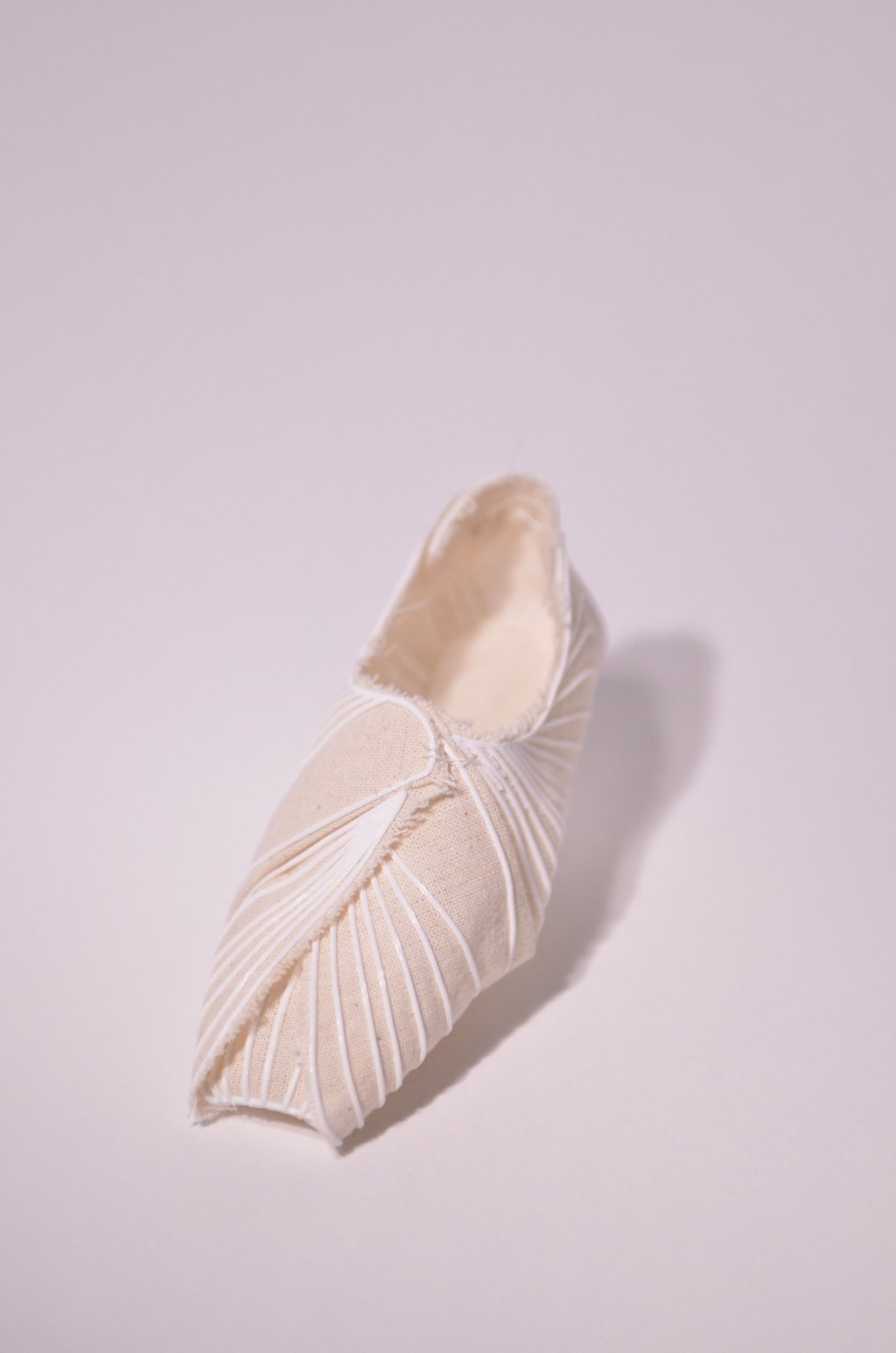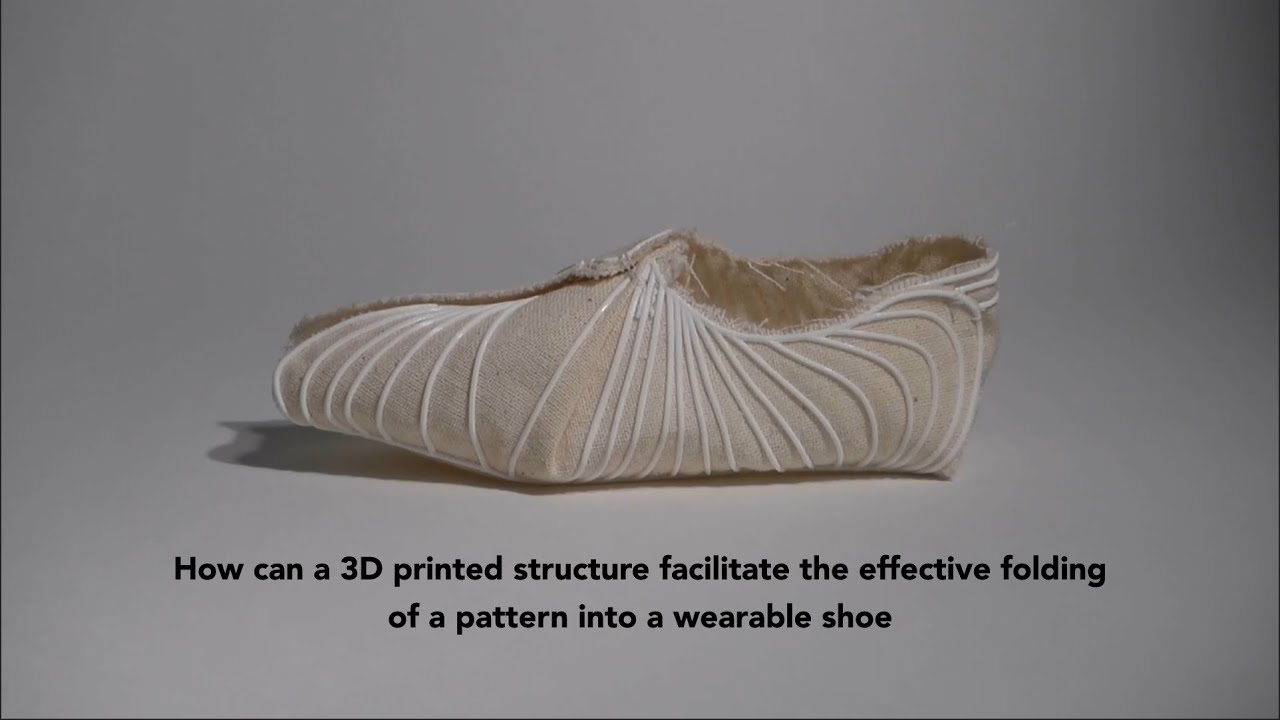Generally, shoes are produced in Asia and Latin America in low-cost countries, mainly because they are made from many different parts that need to be stitched or glued. Current production often does not meet ecological and social standards. The main goal of this project was to explore an alternative footwear production process. We reviewed how Digital Fabrication techniques such as Additive Manufacturing (3D Printing), could help build objects with different structures and properties from a single material to address this issue. This is especially true for novel hybrid printing processes, where the material is printed onto existing fabric.
We developed a fabric-material hybrid in which a rigid material is printed onto flexible fabrics in specific patterns. The resulting structures have properties that facilitate folding the flat pattern into a custom-fitting shoe. In this way, the manufacturing process brings digital design, digital fabrication, and manual assembly together.
We aimed to demonstrate the potential of a novel method of shoe design using different sustainable materials and 3D pattern design. Currently, limited research has been conducted on opportunities for replicating the shape of upper parts of shoes. These projects mainly focused on stretched textiles, polyurethane thread, and self-transformed structures that reconfigured pre-programmed shapes.
We explored an alternative footwear production process using 3D technology to create an upper part of the shoe made from a single piece of material (textile). Using a 3D printer to produce footwear is a first step towards more sustainable shoe manufacturing.





